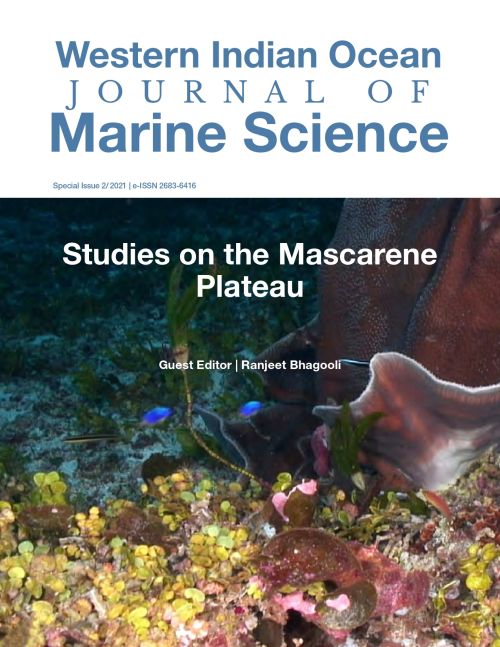Main Article Content
Variable photo-physiological performance of macroalgae and seagrasses from Saya de Malha and Nazareth Banks, Mascarene Plateau
Abstract
The photosynthetic performance of macroalgae and seagrasses related to their body parts, depth and colours from the poorly-studied Saya de Malha and Nazareth Banks on the Mascarene Plateau was investigated in this study. Two seagrass (Thalassodendron ciliatum and Halophila decipiens) and seven macroalgae species (Caulerpa cupressoides, Acrosorium ciliolatum, Dictyosphaeria cavernosa, Halimeda opuntia, Ulva sp., Udotea orientalis and Udotea palmetta) were collected using the five Van Veen grabs attached to the Video-Assisted Multi-Sampler (VAMS) from 29-79 m depths in May during the FAO EAF-Nansen Research Programme 2018. The photosynthetic performance was measured using a Diving-Pulse-Amplitude-Modulated (D-PAM) fluorometer and the parameters included effective quantum yield at photosystem II (PSII) (ΦPSII), relative maximum electron transport rate (rETRm), photosynthetic efficiency (α), photoinhibition (β), saturating light level (Ek), and maximum non-photochemical quenching (NPQmax). All photo-physiological parameters varied significantly in T. ciliatum and C. cupressoides across their body parts. However, variation with seawater depths was not significant for NPQmax and β in the seagrass, and ΦPSII, rETRm and β in the macroalgae. Photo-physiological functioning of the leaf of T. ciliatum was optimal at 40 m. The photosynthetic performance of the frond and stolon of C. cupressoides decreased and remained unchanged, respectively, at 79 m when compared to that at 29 m. The whitish lobes of H. opuntia at 31 m exhibited significantly lower photosynthetic performance, in terms of ΦPSII, rETRm,α and Ek, than the greenish lobes. These findings provide a first insight of seaplant body parts-, depth- and colour-related photo-physiological performance from the Mascarene Plateau.






